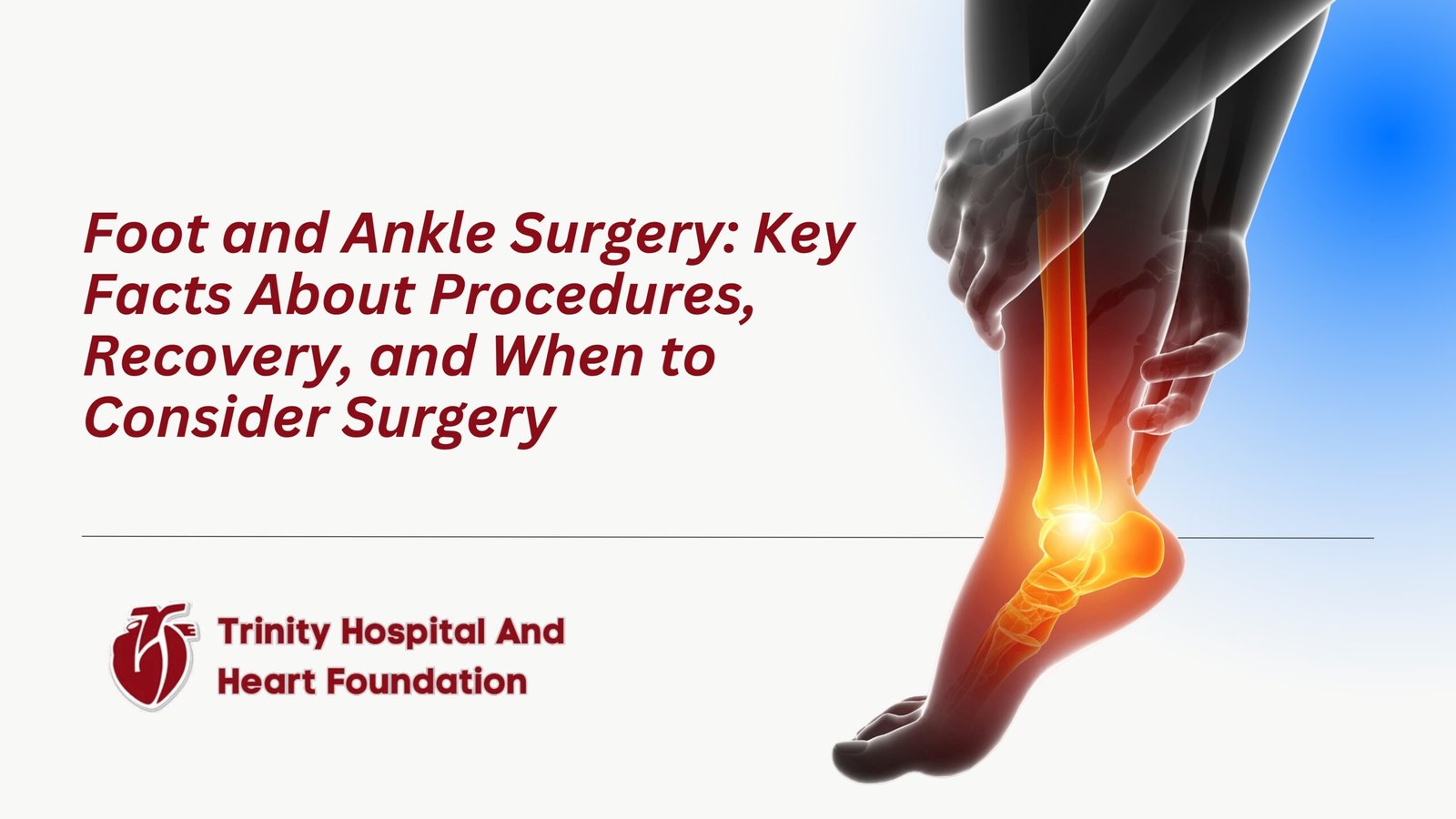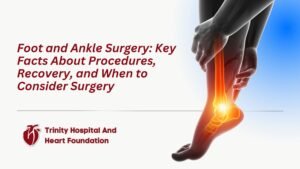

Foot and ankle surgery encompasses a range of procedures designed to treat various conditions affecting the bones, joints, ligaments, and tendons in the foot and ankle. These surgeries are often recommended when conservative treatments like physical therapy, medications, or orthotics fail to relieve pain or restore function. Understanding when surgery is necessary, the different types of surgeries, and the recovery process is crucial for patients considering these procedures.
Common Conditions That Require Surgery
Foot and ankle problems can be caused by injuries, arthritis, deformities, or chronic conditions. Some of the most common conditions that may require surgery include:
Bunions: A deformity of the big toe joint, causing the bone to protrude and create discomfort.
Achilles Tendon Rupture: A tear in the Achilles tendon, typically caused by sudden or excessive stress on the tendon.
Ankle Arthritis: In cases of severe arthritis, surgery can help alleviate pain and improve mobility.
Fractures: Broken bones in the foot or ankle often require surgical intervention, especially if the fracture is complex.
Plantar Fasciitis: When nonsurgical treatments fail to alleviate pain caused by inflammation in the plantar fascia, surgery may be required.
Types of Foot and Ankle Surgery
The type of surgery recommended will depend on the specific condition and its severity. Some common surgical procedures include:
Bunionectomy: A procedure to correct bunions by realigning the bone and soft tissue of the big toe joint.
Achilles Tendon Repair: This involves stitching the torn tendon back together or using grafts from other parts of the body.
Ankle Arthroscopy: A minimally invasive surgery that uses a camera to guide instruments inside the ankle joint to clean out or repair damaged tissue.
Ankle Fusion: A procedure that fuses the bones of the ankle joint, commonly performed to relieve arthritis pain.
Foot Fracture Surgery: Plates, screws, or pins may be used to stabilize broken bones and promote healing.
The Surgery Process
Foot and ankle surgeries are typically performed under regional or general anesthesia, and the duration of the surgery varies depending on the complexity of the procedure. Minimally invasive techniques, such as arthroscopy, are preferred when applicable because they reduce recovery time and minimize scarring.
Recovery and Rehabilitation
Recovery times can range from a few weeks to several months, depending on the type of surgery. The key phases of recovery include:
Initial Healing: During the first few weeks post-surgery, the foot or ankle is usually immobilized in a cast or boot, and patients are advised to keep weight off the affected area.
Physical Therapy: Once the initial healing has taken place, physical therapy plays a critical role in regaining strength, flexibility, and balance.
Full Recovery: Most patients can return to normal activities within 3-6 months, although high-impact activities like running may take longer to resume.
Potential Complications
As with any surgical procedure, foot and ankle surgery carries risks, including infection, blood clots, nerve damage, and issues related to anesthesia. However, with proper care and rehabilitation, these risks can be minimized. It’s essential to follow the surgeon’s advice for post-operative care to ensure a smooth recovery.
When to Consider Foot and Ankle Surgery
If you’re experiencing persistent pain, difficulty walking, or if your quality of life is significantly affected by a foot or ankle condition, surgery may be a viable option. Consult with an orthopedic specialist to explore your treatment options and determine if surgery is the best course of action.
Conclusion
Foot and ankle surgery can provide significant pain relief and restore mobility for individuals with chronic foot and ankle conditions. With advances in surgical techniques, patients can expect better outcomes and faster recovery times. If you’re considering surgery, speak to your orthopedic surgeon to understand the best treatment options for your specific condition.


